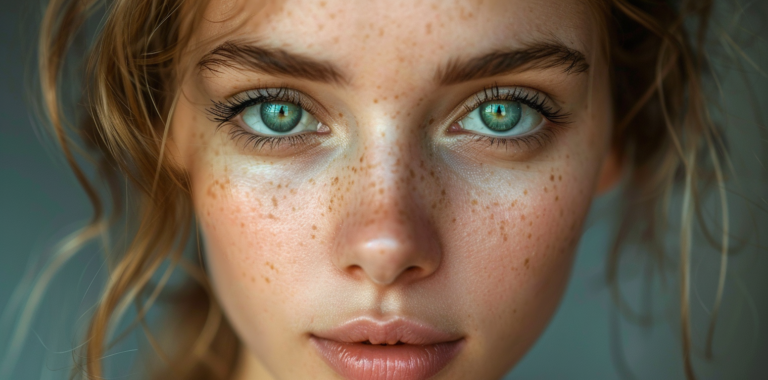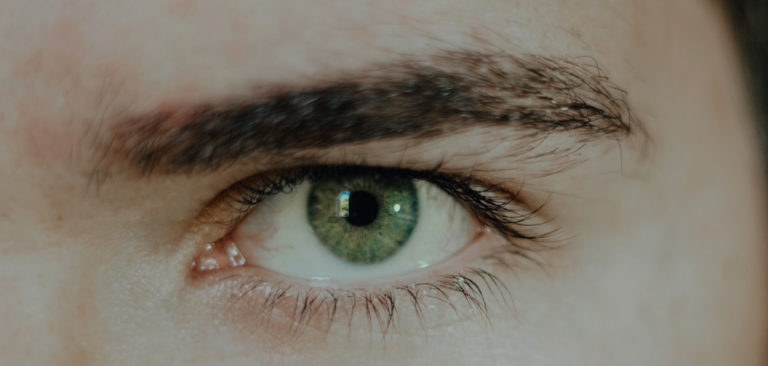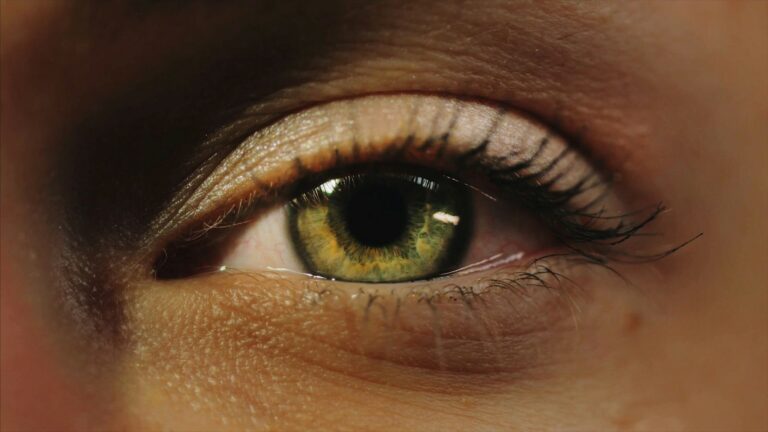What is the most rare eye color? While brown eyes dominate globally, some eye colors are incredibly rare, making them stand out. The rarest eye colors, such as green, amber, and gray, are the result of unique genetic factors and the distribution of melanin in the iris. Understanding the complexities of eye pigmentation and how factors like genetics and light conditions influence these hues can help satisfy your curiosity about eye color rarity.
What Determines Your Eye Color?
Human eye color is determined by the amount and distribution of melanin in the iris. Melanin is a pigment responsible for the color of the skin, hair, and eyes. The more melanin in the iris, the darker the eye color. Eyes with darker colors like brown and dark brown contain high amounts of melanin, while lighter shades like blue, green, and grey have less melanin. The concentration and type of melanin determine the variation in human eye color, which is a complex trait influenced by multiple genes.
Want to change the color of your eyes?
The Rarest Eye Color: What Makes It So Special?
The rarest eye color in the world is green. Only about 2% of the global population is estimated to have green eyes. The green shade is unique due to a specific pigment combination and the way light interacts with the iris. Green eyes are often caused by a lower concentration of melanin and a higher presence of a yellowish pigment called lipochrome. This creates a striking blend of greenish hues, which can range from a light, almost golden shade to a deeper emerald hue.
The rarity of green eyes is due in part to the genetic factors that govern their development. They are often linked to recessive genes, meaning both parents must carry a green-eye gene for their child to inherit this rare trait. This genetic condition makes green eyes less common, and individuals with green eyes often stand out for their unique and captivating look.
Rare Eye Colors: A Closer Look at Uncommon Hues
When it comes to eye color rarity, green is not the only candidate. Differences in eye color and color pigment across the globe mean that other light-colored eyes such as amber and grey shades are also rare. Whilst they might not be the rarest color, let’s take a look at other less common color eyes.
Amber Eyes
Amber eyes are a captivating blend of yellow, gold, and brown hues. The distinct shade is caused by a higher concentration of the pigment pheomelanin, giving the eyes a warm, golden appearance. Amber eyes are incredibly rare, and people with this eye color may have unique genetic variations. This rare eye color is often mistaken for hazel eyes, but the difference lies in the consistent golden hue without the greenish or brown undertones seen in hazel eyes.
Gray Eyes
Gray eyes are another rare eye color. The unique gray shade results from very low melanin levels in the iris, with the added effect of light scattering, much like how the sky appears blue. The combination of limited melanin and the way light interacts with the iris creates the greyish hue.
While gray eyes are often seen in people of European descent, they remain a rarity. Over time, some individuals with gray eyes may experience a shift in pigmentation, potentially becoming lighter or even showing hints of blue.
Heterochromia
Heterochromia refers to a condition where a person has two different eye colors or variations in the same eye. The condition can be classified into two types: complete heterochromia, where each eye is a different color, and sectoral or central heterochromia, where there are two different colors within the same iris.
This condition can occur due to genetic factors or as a result of an eye injury, and it can be either congenital or acquired. Although rare, heterochromia can give individuals a striking and unique appearance.
Find the perfect eye color for you
The Genetics Behind Rare Eye Colors
Eye color genetics is a complex subject. The genetics of eye color are primarily determined by the interaction of multiple genes, with the most important one being the OCA2 gene, which regulates melanin production. Variations in this gene can result in a wide range of eye colors, from the common brown and blue to the more rare shades like green or amber.
Recessive and Dominant Genes
Most people have brown eyes, which is the most common color due to dominant genes. However, blue eye color is associated with a recessive gene, which means that both parents must pass on the gene for their child to have blue eyes. This is why people with blue eyes tend to be in the minority, as the gene for brown eyes tends to dominate. Some of the rarest eye colors, like green, can occur due to the interaction of multiple genes that affect melanin production.
The gene activity that controls the production and storage of melanin can result in a broad range of hues, from lighter shades to darker browns. (Desiree White et al., 2011)
What is the Most Common Eye Color?
The most common eye color is brown, resulting from a higher concentration of brown pigment in the iris. Brown eye colors are darker, with higher levels of melanin that absorbs light. This eye color accounts for the majority of the global population. Lighter eye colors, like blue and green, are much rarer and occur due to lower melanin levels. The eye color variation across individuals reflects the genetic influence on iris color and melanin distribution, making brown eyes the most prevalent.
How to Change Your Eye Color
Changing eye colors in humans is an intriguing option for those seeking a unique look. While eye color is largely determined at birth, eye pigmentation can be altered through various methods. Consulting eye doctors can help you understand the complexity of eye color and explore ways to achieve the rarest eye colors.
Contact Lenses
One of the easiest and non-invasive ways to change your eye color is by using colored contact lenses. These lenses come in a wide range of shades, from the rarest eye colors like gray and green to lighter eye colors like blue. Depending on your lighting conditions, these lenses can dramatically enhance your eye color, giving you a vibrant pop.
Many people use colored contacts to achieve a more attractive eye color or simply experiment with different looks. Contact lenses are widely available and can be prescribed by eye doctors, but it’s crucial to consult a professional to avoid any potential eye conditions.
Keratopigmentation (FLAAK Surgery)
At the Neoris Clinics, FLAAK surgery, also known as keratopigmentation, allows patients to change their eye color permanently. The procedure involves implanting pigment into the cornea to cover the natural eye color, providing a new, rare eye color, such as amber or gray. The surgery is quick, painless, and performed under local anesthesia.
The procedure is safe, with minimal risk, and it’s a proven technique. Patients can even adjust the intensity of their new eye color over time. It is a revolutionary way to achieve a unique shade of color, giving individuals the option to express themselves through their iris pigmentation.
Eye color change: Before and after pictures
Corneal Tattooing
Corneal tattooing is another option. This procedure involves injecting ink into the cornea to change the natural eye color. It’s often used to treat eye conditions, but it can also be used for cosmetic purposes, providing a rare and attractive eye color.
Corneal tattooing, while less common, allows for a wide variety of shades, from subtle changes to bold color transformations. It’s important to consult with an experienced professional to ensure the procedure is done safely, as there can be complications if not performed properly.
Keratopigmentation Services
At Neoris clinics, we specialize in FLAAK surgery, also known as keratopigmentation, to offer a safe and innovative solution for changing eye color. Our experienced surgeons, trained in advanced techniques, provide personalized procedures tailored to your desired eye color.
Whether you’re seeking to enhance your natural hue or try something entirely unique, our keratopigmentation services ensure a high level of precision, safety, and customer satisfaction. We offer this transformative procedure at Neoris clinics worldwide, helping you achieve your desired eye color!






